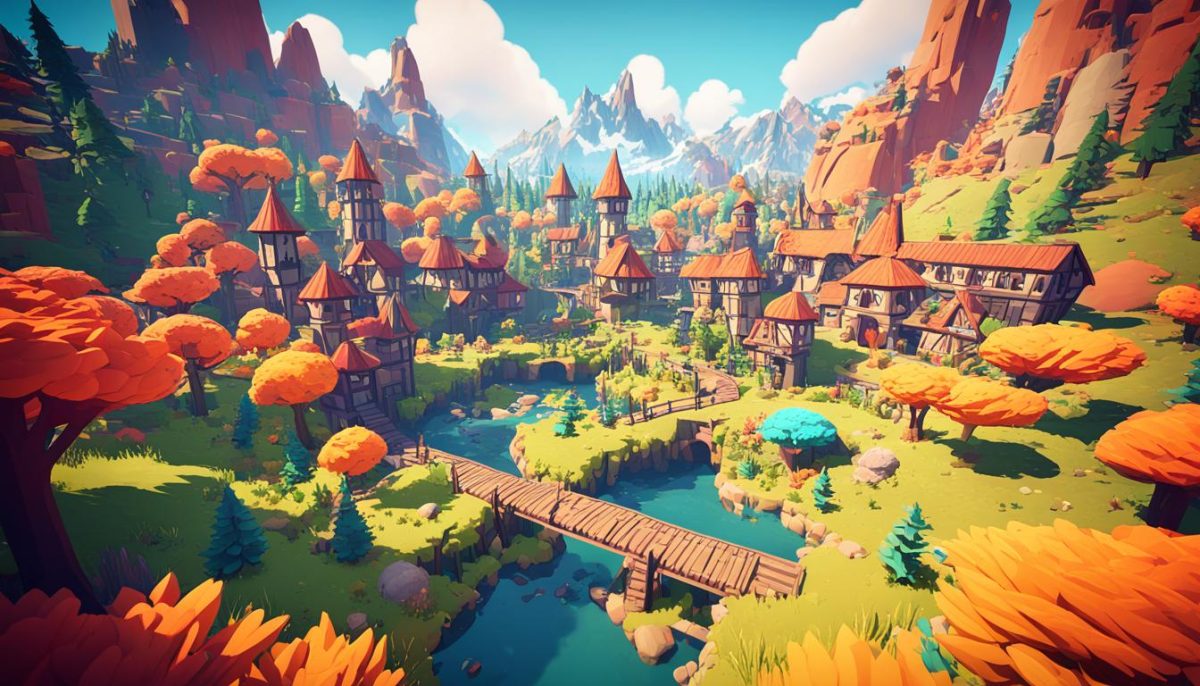What Is Procedural Generation In Game Design
Welcome to the world of procedural generation in game design! If you’re an avid gamer or a game developer, you’ve probably come across this term before. But what exactly does it mean?
Procedural generation refers to the process of creating game content dynamically, using algorithms and predetermined rules. Instead of manually designing every aspect of a game world, developers can utilize procedural generation techniques to generate vast and unique environments on the fly. This revolutionary concept has transformed the way games are created and experienced, opening up a world of possibilities for both players and developers.
Imagine stepping into a game where no two playthroughs are the same. Procedural generation allows for the creation of endless landscapes, dungeons, quests, and more. Each time you play, the game generates a fresh experience, providing a sense of discovery and excitement that keeps players engaged for hours on end.
Not only does procedural generation offer infinite replayability, but it also saves developers valuable time and resources. By automating the content creation process, developers can focus on fine-tuning gameplay mechanics, storytelling, and other crucial elements that enhance the overall player experience.
Whether you’re exploring the vast universe of No Man’s Sky or navigating the unpredictable dungeons of Spelunky, procedural generation is at the heart of these immersive experiences. It allows developers to push the boundaries of creativity and deliver games that captivate players with their boundless possibilities.
In the following sections, we will delve deeper into the benefits, challenges, and future trends of procedural generation in game design. So, buckle up and get ready to dive into the exciting world where algorithms create gaming marvels!
Benefits of Procedural Generation in Game Design
Procedural generation has revolutionized game design by offering numerous benefits that enhance the gaming experience. This section will explore how the use of procedural generation provides game developers with vast opportunities to create immersive and dynamic game worlds, all while saving time and resources.
Creating Vast and Immersive Game Worlds
One of the significant advantages of procedural generation in game design is the ability to create vast and immersive game worlds without the need for manual design. Instead of spending countless hours meticulously designing every aspect of the game environment, developers can use procedural generation algorithms to automatically generate diverse landscapes, terrains, and structures. This not only saves time but also allows for the creation of unique and visually captivating environments that keep players engaged and immersed in the game.
Driving Replayability with New Content and Challenges
Another key benefit of procedural generation is its ability to promote replayability by generating new content and challenges for players in each playthrough. With procedural generation, no two gameplay experiences are ever the same. Every time a player starts a new game or embarks on a new quest, the game world is dynamically generated, offering a fresh and unique experience. This keeps players engaged, as they constantly encounter new obstacles, discover hidden treasures, and explore uncharted territories. The element of surprise and unpredictability provided by procedural generation enhances the overall replay value of a game.

Furthermore, procedural generation allows developers to create challenging gameplay experiences that adapt to the player’s skill level. By dynamically generating enemies, puzzles, and obstacles, game designers can ensure that players are constantly faced with engaging and tailored challenges. This adaptability adds a level of freshness and excitement to the gameplay experience and encourages players to continue playing and exploring the game world.
In summary, the benefits of procedural generation in game design are manifold. It enables developers to create vast and immersive game worlds without the need for manual design, saving both time and resources. Additionally, procedural generation promotes replayability by generating new content and challenges for players in each playthrough, ensuring a dynamic and exciting gaming experience.
Challenges and Considerations in Procedural Generation Game Design
Implementing procedural generation in game design presents a multitude of challenges and considerations that developers must address to create a compelling and balanced gaming experience. These challenges encompass various aspects, including maintaining balance, ensuring a fair player experience, handling algorithmic complexity, and overcoming the limitations of procedural generation.
Maintaining Balance
One of the key challenges in procedural generation is maintaining balance within the game. As environments and gameplay elements are generated algorithmically, there is a risk of producing content that is either too difficult or too easy for players. Achieving the right level of challenge is crucial to keep players engaged and provide a satisfying experience.
Ensuring a Fair Player Experience
Another consideration in procedural generation is ensuring a fair player experience. Randomly generated content can lead to imbalances, such as overpowered or underpowered items, enemy encounters that are too difficult or too easy, or unfair distribution of resources. Developers need to implement algorithms and systems that guarantee fairness and prevent frustration or lack of engagement.
Handling Algorithmic Complexity
The complexity of procedural generation algorithms can also pose challenges. Designing algorithms that effectively generate diverse and coherent content while maintaining performance can be a delicate balance. Developers must carefully optimize and fine-tune these algorithms to ensure seamless gameplay experiences without sacrificing quality.
Overcoming the Limitations of Procedural Generation
Procedural generation has its limitations, such as repetitive content and lack of narrative depth. While it excels in creating vast and dynamic environments, it may struggle with storytelling and character development. Game designers must find ways to supplement procedural generation with handcrafted elements to create more engaging narratives and meaningful player experiences.
Addressing these challenges often requires a combination of creative problem-solving, iterative design processes, and player feedback. By understanding and navigating these considerations, developers can harness the power of procedural generation to create immersive and captivating game worlds.

Future Trends in Procedural Generation Game Design
As technology continues to advance, the future of procedural generation in game design holds great promise. Emerging technologies such as machine learning and AI algorithms are likely to shape the way games are generated and experienced. These advancements open up exciting possibilities for developers to create even more immersive and dynamic game worlds.
One of the future trends in procedural generation is the integration of machine learning algorithms. By analyzing player behavior and preferences, games can adapt and generate content tailored to individual players. This level of personalization enhances the player experience, making each playthrough unique and engaging. In turn, this leads to increased player satisfaction and longer-lasting enjoyment.
Furthermore, procedural generation is poised to have a significant impact on various game genres. We can expect to see procedural generation being utilized in a wider range of game types, including RPGs, action-adventure games, and even sports simulations. This expansion will further diversify the gaming landscape, providing players with fresh and exciting experiences across different genres.
With procedural generation constantly evolving, the expectations of players are also changing. Players are seeking more than just randomly generated content; they want meaningful and purposeful experiences. In response, developers are exploring ways to combine the advantages of procedural generation with carefully crafted narratives and quests, resulting in immersive gameplay that strikes a balance between structure and spontaneity.







